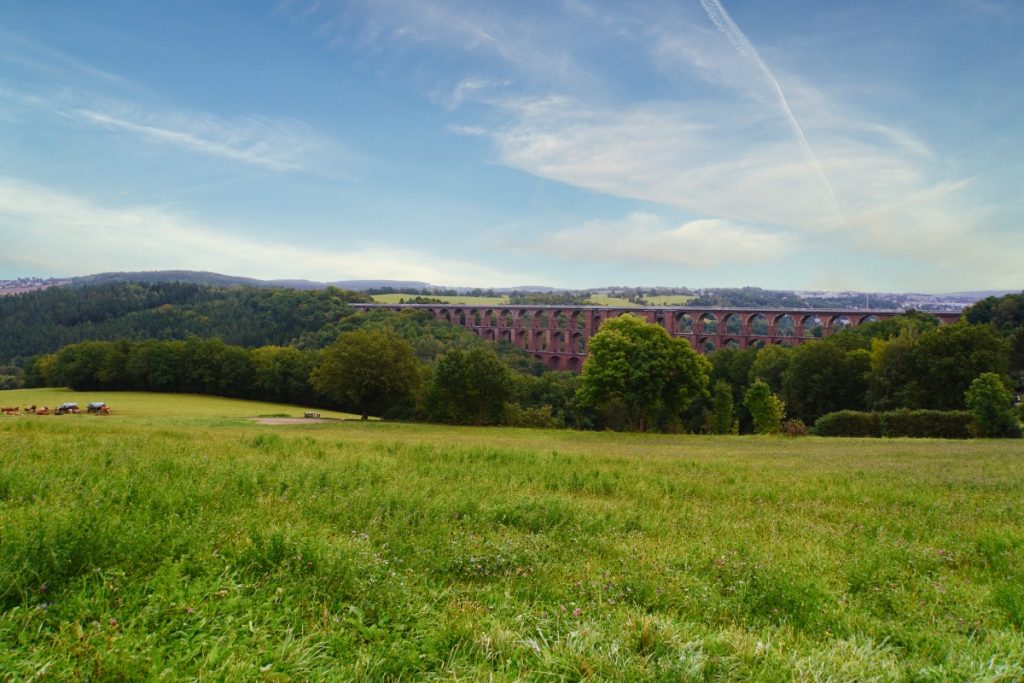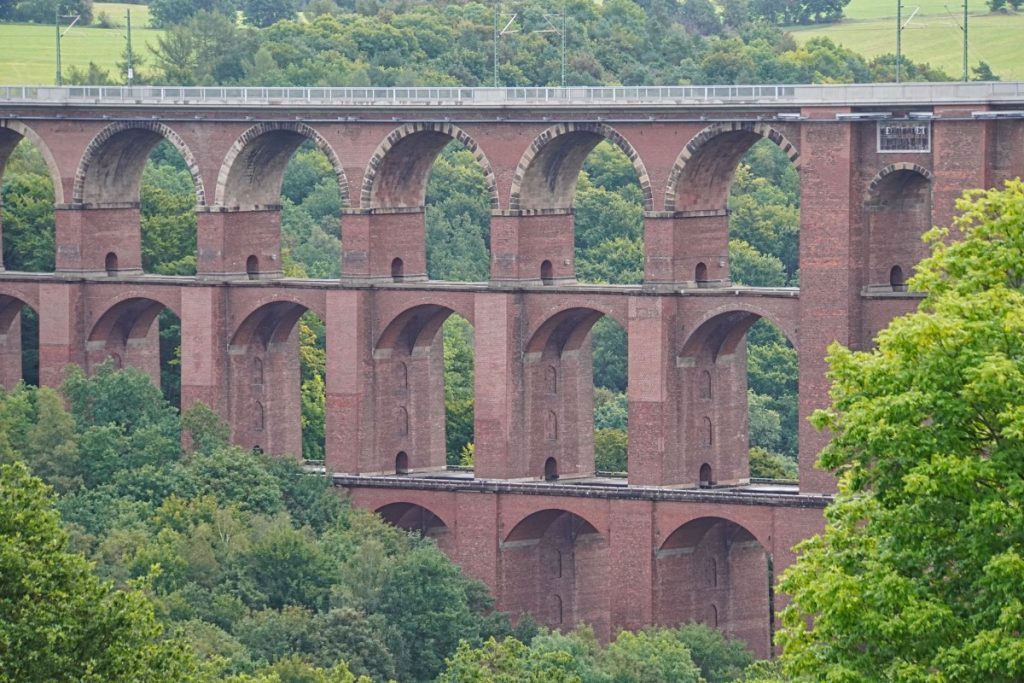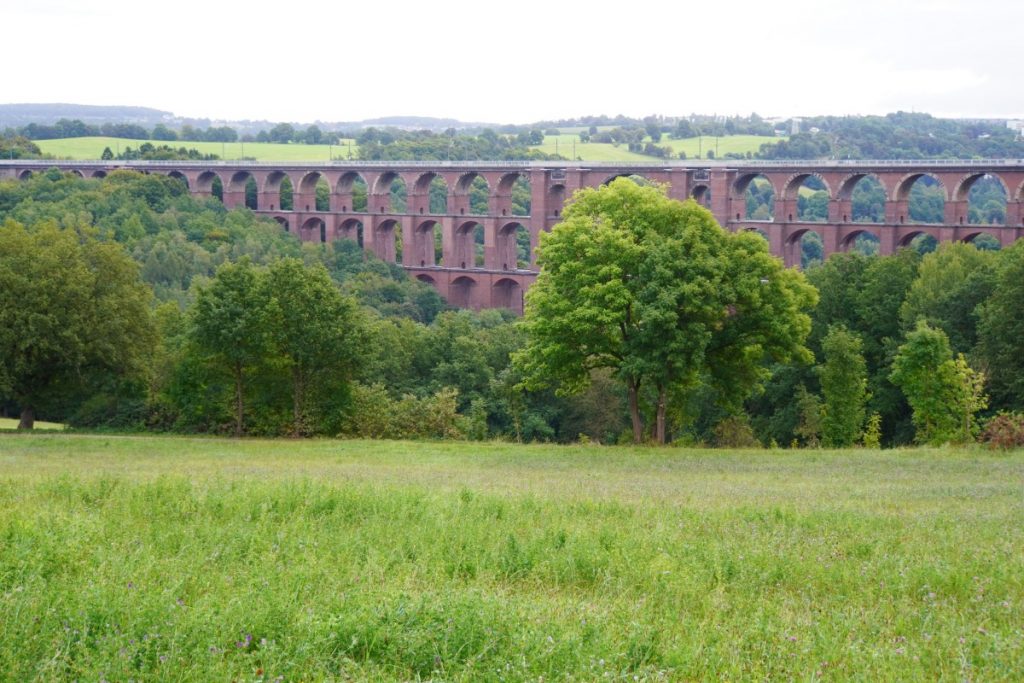In pictures, the Göltzschtal Bridge already looks very impressive, but when you see it in reality, it is even more impressive and I can understand why it is the landmark of the Vogtland.
A bridge is built over the Göltzsch
During the planning of the railroad line from Leipzig to Hof, it quickly became apparent that the greatest challenge would be crossing the Göltzsch valley. The Saxon-Bavarian Railway Company announced a competition at the end of January 1845, which produced 81 bridge designs as a result. Many of them were beautiful, but according to the static calculations they could not withstand the use by a railroad. The prize money of 1000 talers had to be shared by four designs, but they were never implemented.
Taking into account static calculations and based on the knowledge gained during the construction of the viaduct in Leubnitz, Professor J.A. Schubert designed a new bridge. He designed the first statically calculated bridge in the world.
The design called for the bridge to be built almost entirely of brick, with granite only in places subject to heavy loads. As is so often the case, in reality a design often has to be revised. After the foundation stone was laid in 1846, it quickly became apparent that the strength of the foundation soil was insufficient. The chief engineer Wilke adjusted the plan accordingly.

Construction phase
After the foundation stone was laid in 1846, a large construction site developed that involved the entire surrounding area.
Of course, sufficient building materials and manpower were needed:
- From the clay of the surrounding area, almost 20 brickworks along the railroad line fired up to 50,000 bricks a day. These were created in the so-called Dresden format (calculated in Saxon inches) 11 3⁄4″ × 5 3⁄4″ × 2 3⁄4″. This roughly corresponds to a brick size of 27.73 cm × 13.57 cm × 6.49 cm. In total, 26 million bricks were used.
- Huge amounts of wood were needed for the scaffolding. The figures that can be found in today’s literature vary enormously. Some speak of 23,000 trees, others of 230,000 trees.
- About 1700 workers were employed on the construction.
- The construction costs amounted to about 2.2 million thalers.

In September 1850, the last keystone was set in the upper large arch. Of course, the then King Friedrich August II did not miss such an event and was present on site.
A viaduct with a total of 98 arches had been built, which is still the largest brick bridge in the world.
On July 12, 1851, a load test was carried out, which made it possible to celebrate the inauguration of the bridge three days later.
The railroad passes over the Göltzschtal bridge
With the completion of the bridge, the last section of the railroad line from Leipzig to Hof could go into operation. The section from Reichenbach to Plauen was duly opened with a procession attended by many VIPs and nobility.
The first regular timetable came into force on July 16, 1851 and provided for four passenger trains and two freight trains to cross the highest railroad bridge in the world at that time on the first day.
Today, the Göltzschtal Bridge is also used by tilting trains, which can use the winding route faster than other trains.
Since June 2009, the brick bridge has been one of the “Historic Landmarks of Engineering”.

View of the Göltzschtal bridge
It’s not easy to get a good view of such a large bridge. To get the 78-meter-high and 574-meter-long railroad bridge as a whole on a photo, you need a good vantage point.
We were drawn to the village of Netzschkau. After a few meanders through the streets of the town, we arrived at a dirt road. From there, the Göltzschtal Bridge stretched out before us in all its beauty. What an impressive panorama.








Leave a Reply